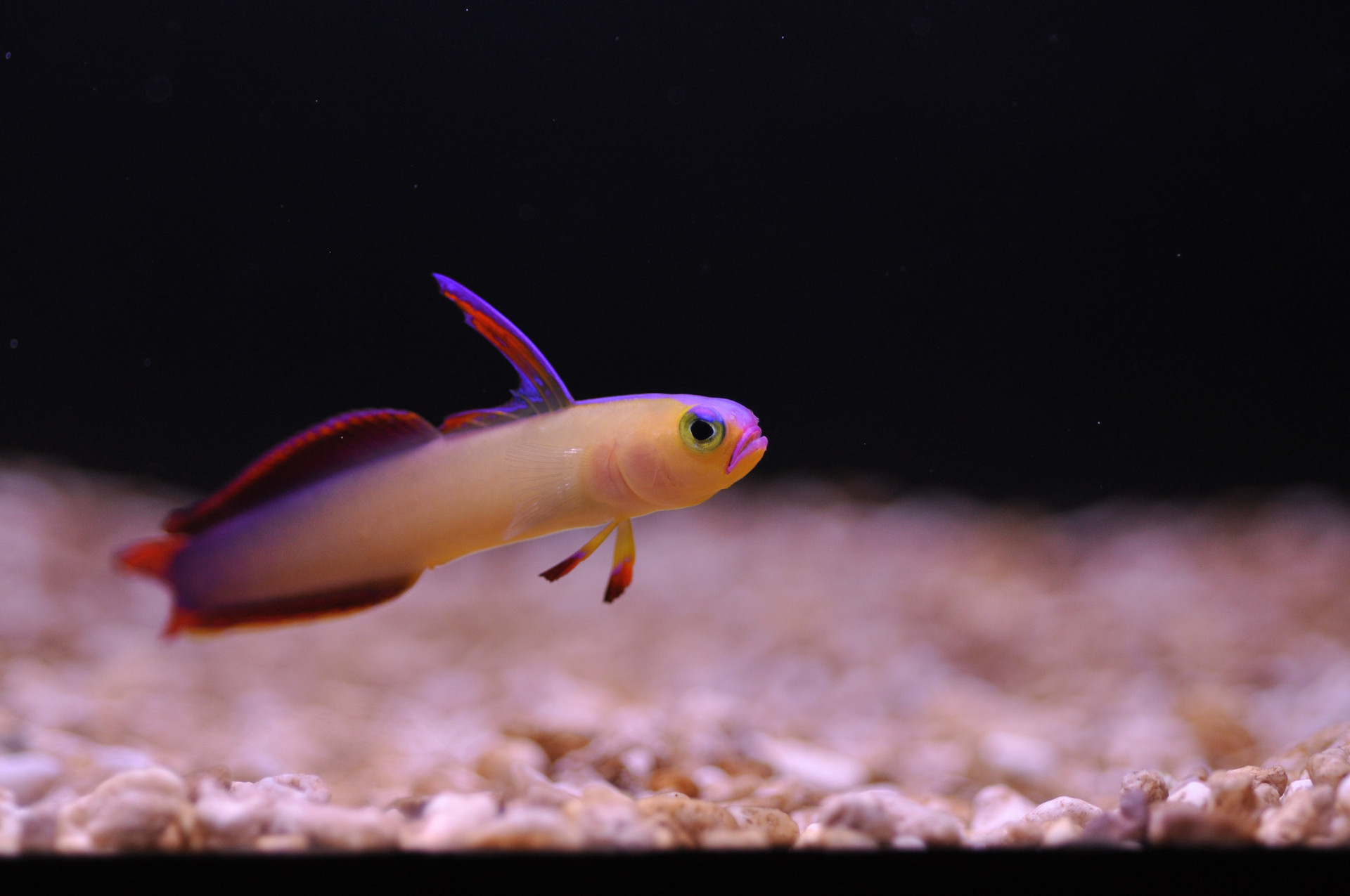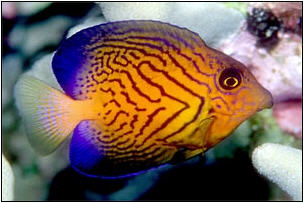Revisited: Introducing Fish to the Reef Aquarium

Introducing Fish to the Reef Aquarium
The moment of releasing fish into the reef aquarium and shortly thereafter are critical periods of time. The success of a newly introduced fish can depend upon the initial actions and management strategy of the aquarist. This article will make recommendations and warnings for the time after fishes have been acclimated to the display aquarium water and are ready to be released. A newly introduced fish will be entering a small world in which it can face great stress, injury or death in relatively short time. An established reef aquarium may present a new fish with potentially harmful invertebrates and fish with defended territories. There are special dangers that can be anticipated, avoided and alleviated by the aquarist. No single methodology of introduction will work in all cases and different species can present differing challenges.

When to Introduce?
Always plan ahead for when you are going to introduce new fish to a reef aquarium. Be sure to have several hours available without distraction so that you can observe the interactions of the fish with their new home. It is advisable to observe the new fish frequently over the first few days and so this should be planned for as well. Some hobbyists choose to add fish before a day off of work to allow for regular observation during this important time.
Preparing the Aquarium for the Introduction
Various things can be done by the aquarist to prepare the aquarium and any existing inhabitants for the introduction of new fish. It is often recommended to reduce the illumination on the aquarium to reduce the stress on a new fish. This may be beneficial, but the lighting should not be so dim that it causes difficulty for the new inhabitant to seek refuge, and to avoid obstacles and dangerous creatures. Reduced lighting may also cause the existing inhabitants to be less aggressive and retreat to their resting lairs. Resident fish can be well fed prior to releasing newcomers to eliminate any aggression that could come from hunger or anticipation of feeding.
If the aquarium is not fully covered, it is strongly recommended to fit any openings with screens or barriers. Stressed, disoriented or chased fish will sometimes leap from the aquarium and can do so through surprisingly small openings. The first night is probably the most risky time for a new fish to jump out.
A few supplies should be on hand in case any intervention becomes necessary. Nets and long poker rods can be used to break up any fights or to herd animals to desired areas. A bucket or other vessel should be ready in the event that any fish would need to be removed from the aquarium.

Introducing New Fish
How you actually release the fish into the aquarium should depend on the species and its natural habitat preference. Fishes that live in close association with caves, holes and crevices should be physically guided (with net or hand) to these aquascaping features which are not already occupied by other fish or territorial invertebrates such as crabs, lobsters or shrimp. Fishes that are more free-swimming should be released in open areas that are not already existing territory for someone else. If a group of schooling fishes are being introduced, these should be released together so that they can more easily and quickly form a school which reduces stress and increases their safety.
No fishes should be released in the close proximity of stinging invertebrates such as anemones and many large-polyped corals. Stressed fish may suddenly dart into hazardous situations before they have a chance to recognize the impending danger. If anemonefishes are being introduced with the goal of having them occupy a symbiotic anemone, they should be released near the host anemone. Some species will begin the process of entering the tentacles within minutes or hours.
Expect the inhabitants of your reef aquarium to notice the newcomer and react with anything from indifference to outward hostility. Brief chases, displaying and posturing are common observations in the time just after introduction. You should pay close attention for several hours to watch for any vicious attacks or prolonged chasing. Some aggressive interactions may be delayed until the new fish begins to explore its new surroundings and encounters the various inhabitants and their personalities. This is one of the reasons why it is important to make frequent observations over the hours and days following a new introduction.
When Bad Things Happen
Sometimes aggressive interaction can be so severe or injurious that the aquarist is compelled to intervene. Many fish are capable of inflicting physical damage to another fish in a short period of time. If it becomes necessary to break up a fight, you can start by attempting to use nets, pokers or other tools to separate or distract fish that are acting aggressively. If this does not help, it may be appropriate to try to capture the aggressor. If this is possible, simply isolating this fish for an hour or so could end the conflict. Other methods used to possibly stop fighting include feeding or shutting off or significantly dimming the lighting. In some cases, screen partitions can be set up in the aquarium to separate individuals for more extended periods. In the worst case scenarios, a decision may need to be made to remove a fish from the aquarium for days or more and whether or not a reintroduction will be attempted. This is more likely to work if an aggressive original inhabitant is the one being isolated as opposed to the new fish.
If new fishes are wisely chosen according to their compatibility, bad outcomes and the need for intervention are greatly minimized.

Adapting to the New Home
The full acclimation and adapting to the new aquarium environment probably takes place over days or weeks. The new fish will need to both seek cover and assert itself when necessary in the context of other fishes. It will need to be able to acquire enough of the proper foods amongst competition in order to sustain health and thrive. Though many new fish will begin feeding soon after release, some may be hesitant at first because of the various stresses. For some, it might be initially necessary to provide food for them away from where other fishes are feeding. Try feeding in multiple places within the aquarium, rather than in a single location. Over the following weeks, it will become possible to determine if a fish is not getting enough to eat by observing its body mass. Properly fed fishes will not appear as having slim musculature or sunken bellies.
New fishes that are intelligently chosen and properly introduced in a precautionary manner are likely to adapt well and find their harmonious place in your reef aquarium community.
